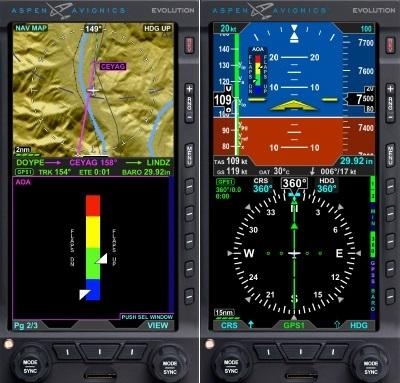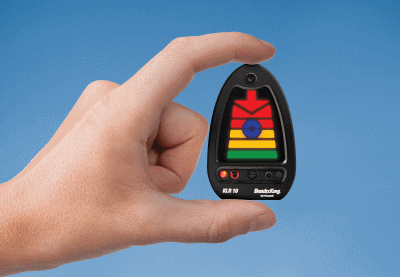Sat, Jul 09, 2016
Encourages Use Of Non-Required Safety Equipment
A new FAA policy encourages general aviation aircraft owners to voluntarily install safety equipment on airplanes and helicopters that is not required by the agency’s regulations. It will reduce costs and streamline the installation of Non-Required Safety Enhancing Equipment (NORSEE) into the general aviation fleet.

The policy is the result of industry and government collaboration under the General Aviation Joint Steering Committee and expands the 2014 FAA policy, which simplified the design approval requirements for a cockpit instrument called an angle of attack (AOA) indicator. AOA devices can be added to small planes to supplement airspeed indicators and stall warning systems, alerting pilots of a low airspeed condition before an aerodynamic stall occurs. Such stalls are particularly dangerous during takeoff and landing.
NORSEE includes avionics, electronic instruments, displays and mechanical equipment. Equipment approved as NORSEE increases overall situational awareness; provides additional information other than the aircraft primary system; provides independent warning, cautionary, or advisory indications; and provides additional occupant safety protection. Examples of NORSEE equipment include: traffic advisory systems, terrain awareness and warning systems; attitude indicators; fire extinguishing systems; and autopilot or stability augmentation systems.
The policy has the flexibility to accommodate the installation of new technology safety enhancements into Part 23, 27, and 29 aircraft that are determined to be a minor change to type design. The benefits must outweigh the risk. The policy will reduce equipment costs by allowing the applicants the flexibility to select various industry standards that suit their product, as long as it meets the FAA’s minimum design requirements.

NORSEE approval under this policy is not an approval for installation on the aircraft – it just makes the equipment eligible for installation on the aircraft. There may be a situation in which installation of the equipment on the aircraft requires modifications that are considered a major change to type design, or major alteration to the aircraft. In these cases, the applicant is required to pursue the appropriate certification path (such as a supplemental type certificate), or field approval process, regardless of the “non-required” designation. The FAA’s online list of approvals will be updated regularly.
(Source: FAA news release. Images from file)
More News
Also: Outlaw Prop 4 Mooney, Ready 4 Duty, Ukrainian F-16 Pilot Lost, Blue Origin Flt On his journey to become the first pilot to land solo on all seven continents, 19-year-old Etha>[...]
Also: DarkAero Update, Electric Aircraft Symposium, Updated Instructor Guide, OSH Homebuilts Celebrate The long-awaited Sonex High Wing prototype has flown... the Sonex gang tells >[...]
Discrete Code As used in the Air Traffic Control Radar Beacon System (ATCRBS), any one of the 4096 selectable Mode 3/A aircraft transponder codes except those ending in zero zero; >[...]
From 2023 (YouTube Edition): Deviation from the Historical Mean Racine, Wisconsin-based DeltaHawk is a privately-held manufacturer of reciprocating engines for aircraft and hybrid >[...]
Aero Linx: Formation and Safety Team (F.A.S.T.), USA The Formation and Safety Team (FAST) is a worldwide, educational organization dedicated to teaching safe formation flying in Wa>[...]
 Airborne 07.02.25: TikToker Arrested, Vietnam A/L Ground Hit, ATC Modernization
Airborne 07.02.25: TikToker Arrested, Vietnam A/L Ground Hit, ATC Modernization Airborne Affordable Flyers 07.03.25: Sonex HW, BlackShape Gabriel, PRA Fly-In 25
Airborne Affordable Flyers 07.03.25: Sonex HW, BlackShape Gabriel, PRA Fly-In 25 ANN's Daily Aero-Term (07.07.25): Discrete Code
ANN's Daily Aero-Term (07.07.25): Discrete Code Classic Aero-TV: DeltaHawk Aero Engine Defies Convention
Classic Aero-TV: DeltaHawk Aero Engine Defies Convention ANN's Daily Aero-Linx (07.07.25)
ANN's Daily Aero-Linx (07.07.25)




